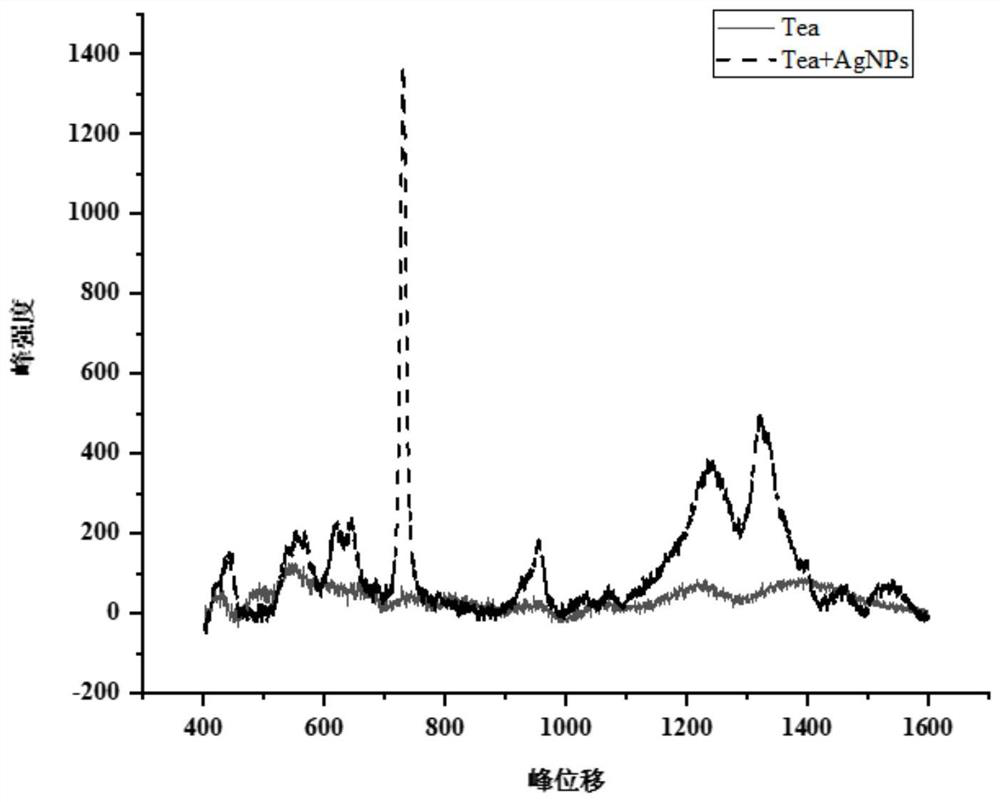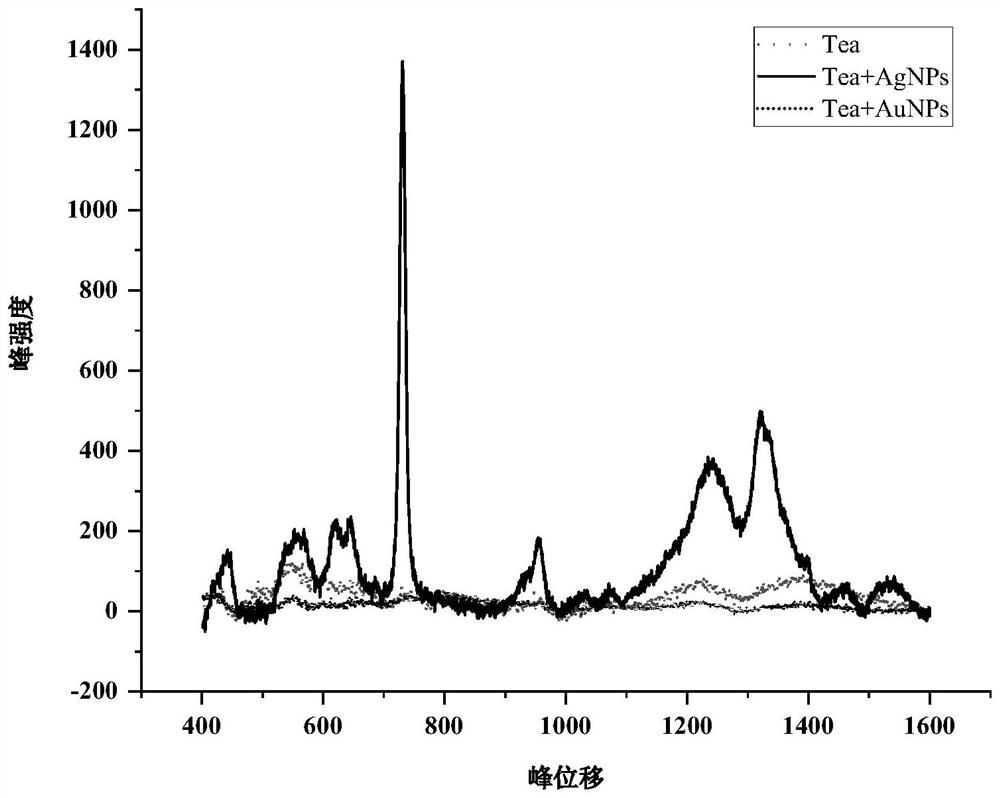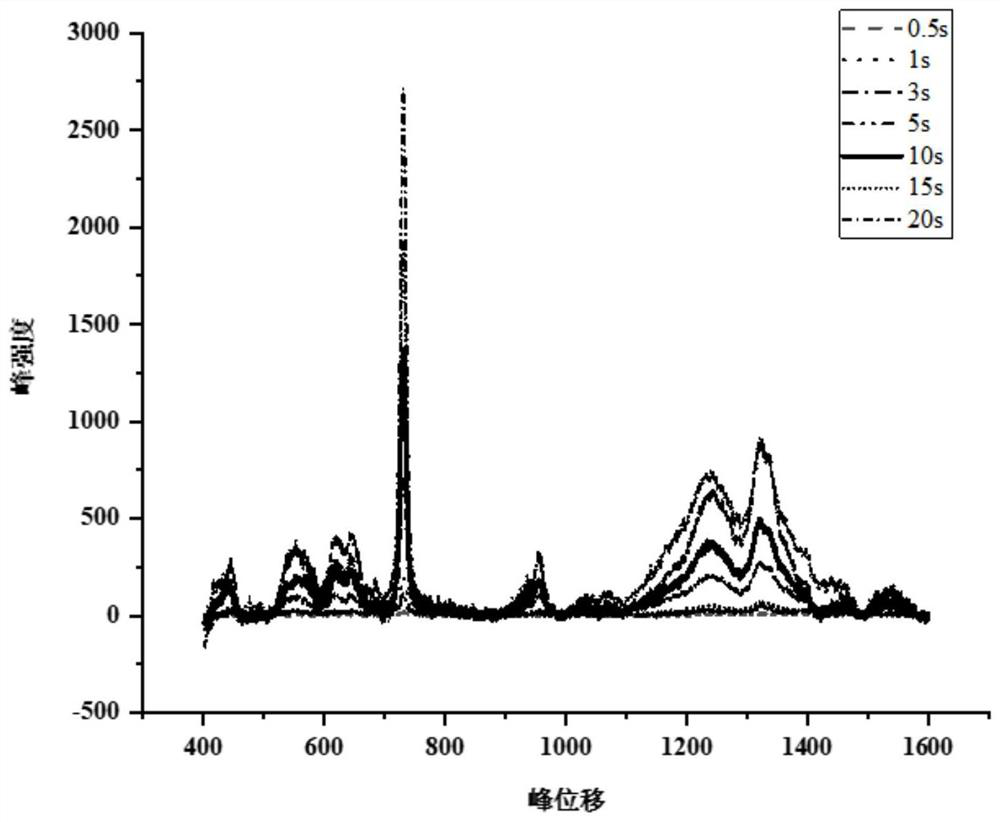Keemun black tea producing area identification method based on Raman spectrum fingerprint technology
A technology of Raman spectroscopy and Keemun black tea, applied in the field of identification of agricultural products and food origin, to achieve the effect of strong Raman signal, simple pre-processing and short operation time
- Summary
- Abstract
- Description
- Claims
- Application Information
AI Technical Summary
Problems solved by technology
Method used
Image
Examples
preparation example Construction
[0045] The preparation method of the nano silver sol adopted in the embodiment is:
[0046]Accurately weigh 90 mg of silver nitrate and dissolve it in 500 mL of ultrapure water, heat it to 90°C, add 10 mL of 1% trisodium citrate aqueous solution dropwise, and stir for 60 min to obtain yellow-green silver glue, centrifuge at 10 000 rpm for 10 min, discard The supernatant liquid was obtained to obtain the nano-silver sol.
[0047] The Raman spectrometer used in the examples is HR Evolution ultra-fast imaging laser Raman spectrometer (HORIBA, France).
[0048] The stoichiometric linear discriminant analysis (LDA) reference (MA G, ZHANG J, ZHANG L, et al. Elements characterization of Chinesetea with different fermentation degrees and its use for geographical origins by liner discriminant analysis) used in the examples [J]. Journal of Food Composition and Analysis, 2019, 82); K-Nearest Neighbor (KNN) References (PENG C Y, ZHANG Y L, SONG W, et al. Using stable isotope signatures t...
Embodiment 1
[0050] A method for detecting the Raman spectrum of tea, comprising the steps of:
[0051] (1) Preparation of black tea soup:
[0052] Weigh 0.5 g of black tea powder (60 mesh) from Guichi, Dongzhi and Qimen, add 15 mL of boiling water, heat in a 100°C water bath for 10 min, and cool to obtain black tea soup;
[0053] (2) Collection of Raman spectra:
[0054] Mix the black tea soup of step (1) and the nano silver sol uniformly according to the volume ratio of 1:1, dry, and place at 400-1600cm -1 Raman detection was performed within the range of the Raman detection parameters: excitation wavelength was 785 nm, laser power was 25 mW, exposure time was 10 s, and each sample point was collected twice to obtain the Raman spectrum.
Embodiment 2
[0081] A method for identifying the origin of Qimen black tea based on Raman spectral fingerprint technology, comprising the following steps:
[0082] (1) Preparation of black tea soup:
[0083] Collect 56 pieces of Qimen black tea from the core production area (Qimen County), 6 pieces of Qimen black tea from the traditional production area of Dongzhi County, and 10 pieces of Qimen black tea from Guichi County as samples;
[0084] The black tea powder tea powder (60 mesh) and 15 mL of boiling water from different origins were heated in a water bath at 100 ° C for 10 min, cooled, and the supernatant was taken to obtain black tea tea soup;
[0085] (2) Collection of Raman spectra:
[0086] Mix the black tea soup of step (1) and the nano-silver sol uniformly according to the volume ratio of 1:1, air-dry naturally, at 400-1600cm -1 Raman detection is carried out within the range, each sample is measured 20 times, the abnormal spectral data is excluded, and the average value is...
PUM
| Property | Measurement | Unit |
|---|---|---|
| particle size (mesh) | aaaaa | aaaaa |
Abstract
Description
Claims
Application Information
 Login to View More
Login to View More - R&D
- Intellectual Property
- Life Sciences
- Materials
- Tech Scout
- Unparalleled Data Quality
- Higher Quality Content
- 60% Fewer Hallucinations
Browse by: Latest US Patents, China's latest patents, Technical Efficacy Thesaurus, Application Domain, Technology Topic, Popular Technical Reports.
© 2025 PatSnap. All rights reserved.Legal|Privacy policy|Modern Slavery Act Transparency Statement|Sitemap|About US| Contact US: help@patsnap.com



